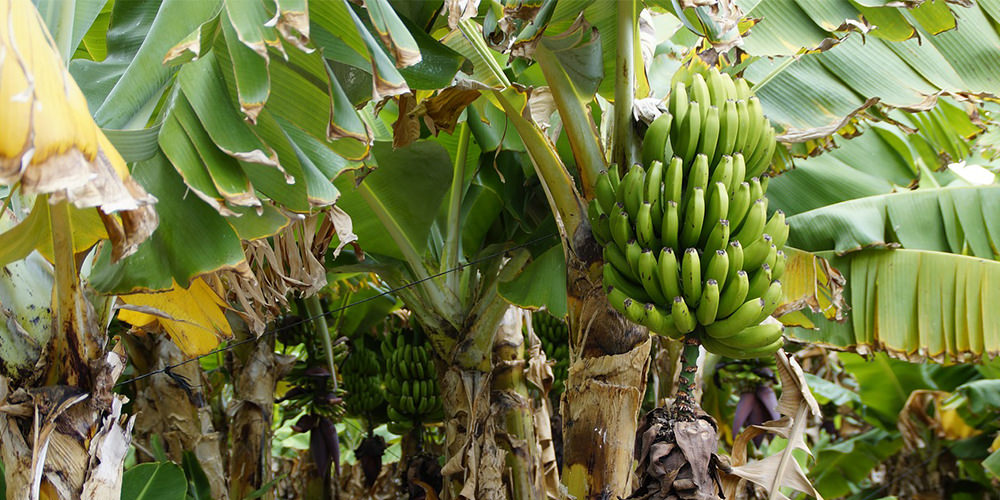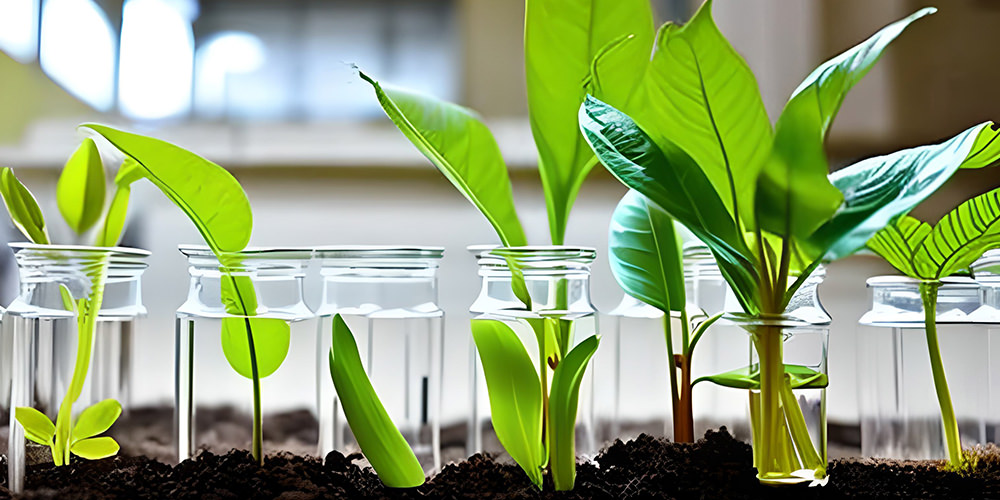How Artificial Lighting Impacts Banana Growth
Ever wonder how those perfectly yellow bananas in the grocery store get there?
Bananas are a tropical fruit that is an important economic crop for many tropical and subtropical regions. Natural sunlight has long been a critical factor in banana cultivation, turning banana plants from green into gold. Yet, the yield and quality of bananas are influenced by climatic conditions, leading to fluctuating profits. With the advance of technologies like vitro techniques, artificial lighting, and smart irrigation systems, bananas grow faster and better in controlled environments.
In this blog, we will talk about the impact of artificial lights on banana growth. From rooting to ripening, the impact of artificial lighting on banana growth is multifaceted.

The basics of banana plants
Bananas are one of the most consumed fruits in the world. Although they are often called trees, bananas are actually herbaceous plants. The plant has large leaves up to 270 cm long and 60 cm wide. When bananas ripen, they change in color from green to yellow, degrade starch, and increase aroma compounds.
As a tropical fruit, bananas are typically grown in warm, humid climates with abundant light. An average temperature of 27°C is beneficial for optimal plant growth and yield. For ripening, temperatures of 20°C to 21°C and 90% relative humidity are best. A sheltered environment protects banana plants from high winds and prevents their leaves from getting tattered.
Since most current varieties of bananas are seedless, commercial bananas are propagated from rhizome cuttings or tissue-cultured plantlets. Growing bananas in greenhouses and indoor farms can achieve year-round growing, significantly cutting costs while also providing better disease control. Artificial lighting is essential for supplemental or serving as the sole light source in these environments. LED grow lights are popular options as they contribute to higher production efficiency and lower operating costs.

Impact of artificial lighting on banana growth
Whether in commercial laboratories, large-scale banana plantations, or retail stores, the key is to provide high-quality banana plants or fruits while earning more profits. Artificial lighting, particularly LED grow lights, can help them achieve their goal effectively and efficiently.
Artificial lights enhance root and shoot development in banana tissue culture
Most commercial tissue culture laboratories require an effective lighting solution to produce more high-quality banana plants at minimum costs. White LEDs are not a one-size-fits-all solution for banana plant production, as plants require specific colors like red and blue to grow well. Blue light and red light stimulate growth, while far-red light can stimulate the morphology of plants. With the right lighting strategies, they can increase yields in an easier production process.
According to research that exposed banana tissue cultures to five different sources of light (fluorescent lamps, white LEDs, red LEDs, blue LEDs, and blue/red LEDs) under a 16-hour photoperiod, LEDs affect the proliferation of shoots, vitro morphogenesis, and rooting of bananas. Red LEDs were more effective in increasing the proliferation ratio compared to fluorescent lamps. Blue/red light obtained the maximum shoot elongation. This was because blue/red LEDs increased the photosynthetic pigments, which promoted the acclimation process in vitro plantlets.

Light can shorten and prolong the preclimacteric life of harvested bananas
It has been shown that light can shorten the green life of bananas compared to darkness, which means light treatment can accelerate the ripening of bananas. Light treatment can also result in sweeter bananas. For retail display, light treatment can be used to accelerate the ripening of green bananas in order to provide more appealing ripe fruits and the best eating quality.
According to research that treated mature green bananas with LED lights (blue, red, and green) for 8 days, blue light was the most effective in accelerating ripening. It was observed that LEDs also caused the onset of climacteric rise, texture loss, color change, and soluble sugar accumulation.
However, another research had different results. This research aimed to clarify the effects of red (640-700nm), orange (605-640nm), yellow (565-605nm), green (505-565nm), blue (440-505nm), and purple (400-440nm) LED lighting on low maturity banana ripening during simulated storage and transportation environments. The results showed that blue and purple light greatly delayed the shelf storage time of bananas, decreasing the color turn and decomposition of cellulose and starch. Yellow and green lights also delayed the decline of banana firmness, but they promoted cellulose decomposition. In contrast, red and orange light effectively promoted banana respiration and ethylene peak, accelerating the ripening of bananas. The research concluded that red light can promote banana ripening faster while blue light inhibits post-ripening and delays senescence.
LED lighting can serve as physical preservation to delay or accelerate ripeness in the process of storage, transportation, and retail of bananas. However, more research is required to find out which light spectrum is most effective.

